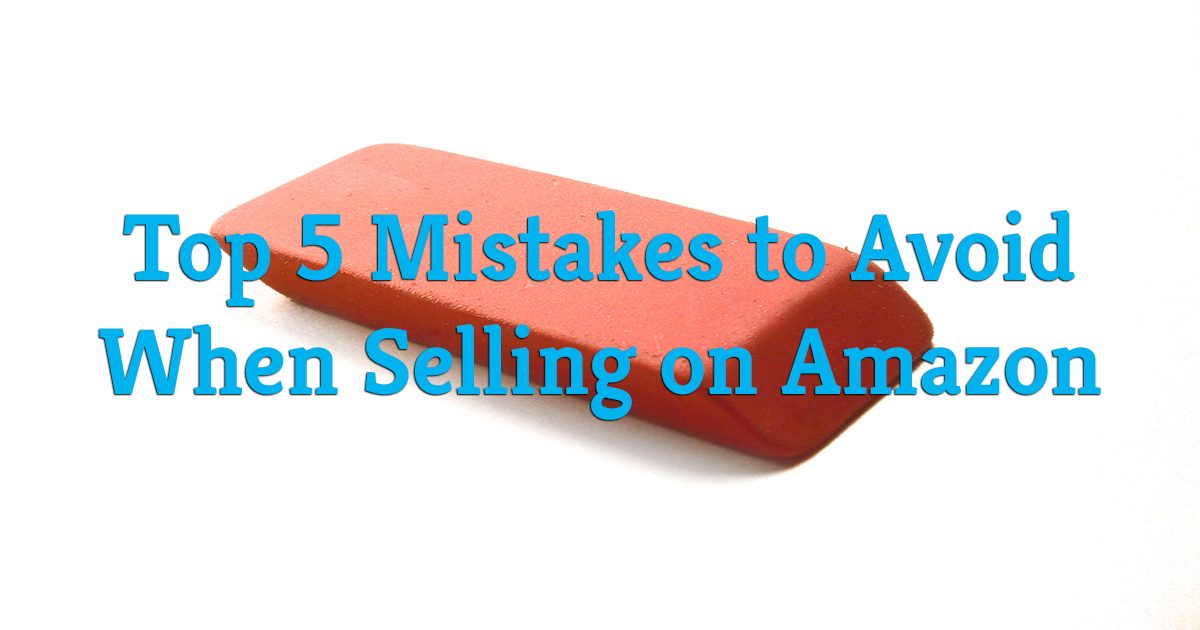
Amazon is a great marketplace to invest your time, effort, and money in. We have all heard about the successful sellers who have earned over a million dollars in annual sales revenues. When you want to succeed in the Amazon Marketplace, there are a number of things that you need to know and mistakes that you need to avoid.
Common Mistakes to Avoid
At the onset, making mistakes seems inevitable. There is a lot of pressure to stand out from the rest of the sellers and increase your market share. There is that daunting task of seeing that your customers’ orders are fulfilled and that they are satisfied. There’s price competition. Don’t forget about inventory management because that is equally as important. You’re probably also worried about increasing your sales volume and profits. Where do you even begin?
If it’s any consolation, successful sellers admit to making a lot of mistakes before they made it big on this platform. Some mistakes were pricier than others, but these big-time online sellers have been generous in providing advice to budding entrepreneurs. Here are some mistakes they have made that you should avoid:
1. Not Prioritizing Profit
When you’re still starting out, you might be tempted to focus only on increasing your sales volume. Sales volume should be prioritized, yes, but it should not supersede every entrepreneur’s main priority: Profit.
All efforts and decisions should revolve around maximizing your profits. After all, this is the whole point of setting up a shop.
In an attempt to grow your market share, you might be tempted to race to the bottom at price wars. While you should price your products competitively, rock-bottom prices can destroy your profit margins.
Many online sellers invest in good algorithmic repricers that take care of monitoring the behavior of the competition and repricing accordingly. With good repricing software, you won’t have to engage in price wars and are assured that your items are repriced for maximum profit.
It also helps to check where your money is spent and to focus on tasks that generate revenue and reduce costs, such as building a robust and cost-effective marketing strategy, finding market opportunities, recognizing and understanding trends, and investing in software that helps you scale.
2. Running Out of Stocks
Selling out or overselling is something you should avoid at all costs because this can be detrimental to your success in Amazon. The surge in sales during the holiday season and during sale days may cause sellers to run out of products, so proper forecasting is critical.
If you run out of inventory, your customers are likely to lose interest in your store and might take their business elsewhere. Aside from the sales loss, Amazon also takes overselling seriously and may penalize you for this.
An inventory management system can help monitor your stocks and prevent overselling. You’ll receive restock alerts, ensure accurate ordering, and some can even perform forecasting tasks.
3. Launching Advertising Campaigns with No Clear Strategy
Strategic advertising has yielded positive results for a lot of sellers, however, the same may not be said for marketing efforts that lacked a clear strategy. Aside from such initiatives being ineffective, they can also cost you a lot of money.
If you plan to launch your advertising campaigns yourself, make sure to spend some time planning and monitoring this. Check if your keywords are relevant and popular – put more weight on the former. It might also make sense to hire an expert if you’re not confident about your level of expertise in PPC campaigns. They can be very costly if this is not done right nor monitored closely.
4. Inaccurate or Unclear Product Listing
Among the things that you’ll want to check and make sure of is having a clear and accurate product listing that comes with high-quality photos of the product.
Aside from the revenue-generating aspect of a good product listing, setting the right expectations with customers helps prevent problems down the line, such as customer complaints or refund requests.
5. Delivering Substandard Customer Service
The need to deliver stellar customer service cannot be underestimated. Customer support should be available at every customer touchpoint to ensure sales and brand loyalty. The longer the customer stays with a brand or company, the higher their customer lifetime value.
On the other hand, substandard customer service reflects poorly on the company. This may also result in sales loss, generate negative reviews, or impact your customer service dissatisfaction rate – things we try to avoid at all costs.
They say that mistakes make great teachers, so if you make mistakes along the way, do know that it happens to the best of us. What’s important is that we learn from this and we monetize the experience by implementing best practices going forward. Always plan things and do your research before implementing a business move. Ask experts and check if there is some form of technology that can help you in the decision-making process.